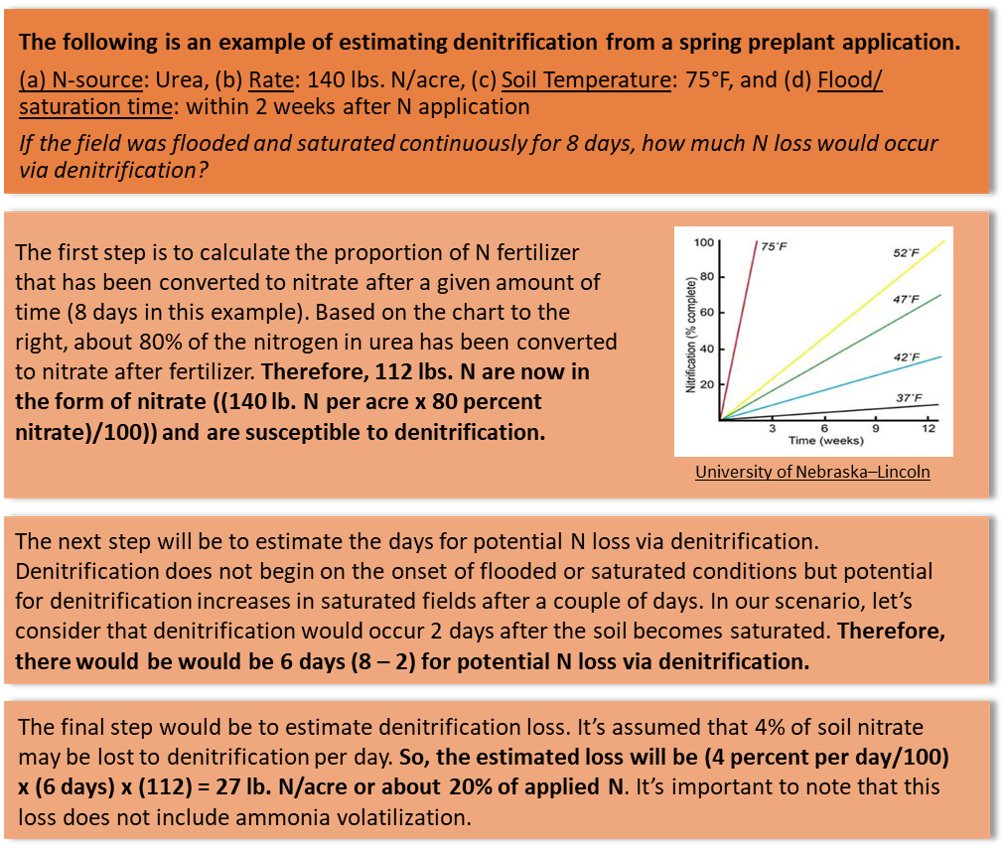From late April and throughout the month of May, many parts of Middle and West TN have received persistent rainfall that is well above the average for this period. These rains have produced persistently wet soil conditions and have coincided with sidedress N fertilizer application where most or all of the recommended N is applied. With this much rain, there is potential for N loss.
Generally, surface-applied unincorporated urea-based fertilizers, are susceptible to N loss via ammonia volatilization, denitrification, surface runoff, and leaching. However, the potential for N loss through denitrification and leaching are of special concern with during periods of excess rainfall and saturated soils.
Leaching involves the movement of nitrate-N (NO3–) with water below the root zone. Nitrate is water soluble, loosely bound to the soil, and therefore susceptible to leaching once the soil is saturated. Soil nitrate that moves below 4 feet is unrecoverable by most crops. Leaching is a greater risk if excessive rainfall occurs shortly after N fertilizer application, when the concentration of nitrate in the soil is high. Soil properties such as texture, structure, bulk density and depth to restrictive layers play major roles in leaching potential. In fine-textured soils with slow percolation, N loss via leaching may be negligible; however, in coarse textured soils where water percolates freely, 20 percent of applied N can be lost by leaching. Since most of the soils throughout Middle and West TN are not coarse-textured, the loss of N via leaching may not be substantial.
In contrast, denitrification is the conversion of nitrate into nitrous oxide (N2O) or dinitrogen gas (N2) when the soil is ponded continuously for at least 2 days. The gases produced during denitrification escape into the atmosphere and reduce the amount of N available for plant uptake. The rate of denitrification is greater in soils containing residue, which serve as food sources for the microbes. Depending on soil properties and environmental conditions, N loss via denitrification may account for 5-25 percent of the total N applied.
In saturated conditions, the dominant N-loss pathway for our soils will be denitrification. So, how would you estimate the amount of N loss as a result of denitrification from your field? The estimate will depend on the nitrogen source applied, the soil temperature at application, the amount of applied N in the nitrate form, and how long the soils have been saturated. Research at the University of Nebraska (click here), provides information on the proportion of applied N that would be in the nitrate form over time. Application of urea ammonium nitrate would result in more nitrates being present when compared to urea if application was made a few weeks prior to flooding or saturated soil.
What should you do now? Corn that appears yellow in a temporarily flooded field does not indicate all of the N has been lost or that the crop is deficient. Most of the N may still be still present, especially for sidedress N applications. The narrative is quite different for fall or winter applications, where denitrification loss will be higher considering most of the N is in nitrate form. Producers who applied all their N in the fall, winter, or early spring should make plans to apply additional N if needed.


